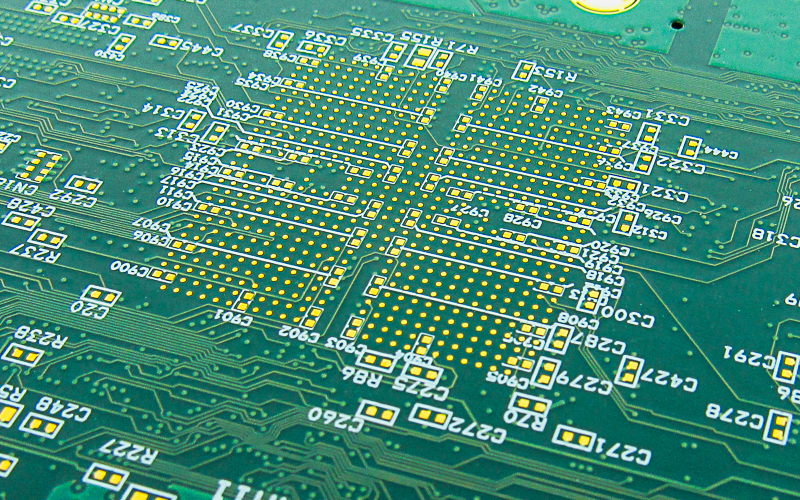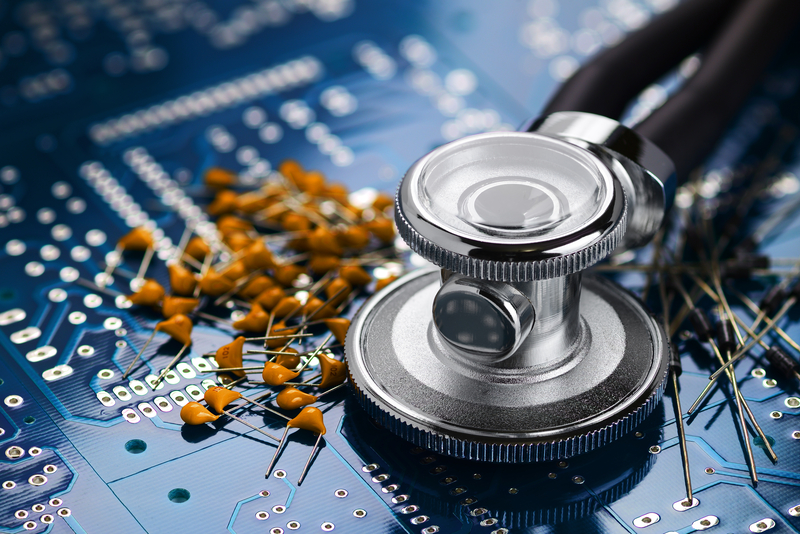The medical electronics industry relies on PCBs for more than just the electronics. The increasing complexity of medical equipment is making it difficult to create PCB prototypes quickly and effectively. However, a professional medical prototype PCB service can help you develop your product faster by providing you with quality parts and unlimited revisions.

The medical electronics industry relies on PCBs for more than just the electronics
The medical electronics industry relies on PCBs for more than just the electronics. Medical electronics are used to monitor patients, the environment and equipment, as well as other factors related to human health and safety. In addition to electronic components such as resistors, capacitors, inductors and diodes that are widely available from manufacturers like Murata Electronics North America Inc., many companies in this sector also rely on printed circuit boards (PCBs) to provide structural support of their products.
The medical electronics industry has been growing rapidly, with revenue expected to reach $300 billion by 2020. PCBs are key components of many medical devices, and the industry relies on them for more than just electronic purposes.
The global market for PCBs is estimated to be worth approximately $35 billion, with an average growth rate of 6% per year.
Electronics are used in almost every aspect of human life, and this is especially true for medical devices. The medical electronics industry relies on PCBs to provide the support structure needed for these products. They also use them as an essential part of their circuitry.
Medical PCB prototyping is becoming a necessity
The medical PCB electronics industry has undergone a dramatic transformation in recent years. The complexity of medical devices has increased significantly, while the size of these devices has shrunk. This means that manufacturers need to design PCBs with smaller footprints and higher reliability than ever before.
In addition, these boards must be manufactured at lower costs so that they can be sold at an affordable price point without compromising quality or performance. As a result, prototyping your PCBs using 3D printing allows you to test various layouts before committing time or money on production runs—saving both time and money in the long run!
3D printing is not just for prototypes, though. It can also be used to create finished products. This process is known as additive manufacturing (AM), and it’s growing in popularity among medical device manufacturers for its ability to produce complex geometries with high precision and accuracy. By using 3D printing to create your PCBs, you can reduce the amount of time needed for tooling by 95% or more!
This means that you can go from design to prototype in just hours, instead of weeks or months. 3D printing also reduces waste and lowers costs because there are no tooling fees or setup costs associated with the process.
3D printing is a great way to create PCBs. It helps you test designs before committing to production runs, it reduces your production costs and speeds up the development of new products. If you don’t already have a 3D printer in-house, consider doing an RFI or RFP with multiple vendors to find the right solution for your needs.
Benefits of using a professional medical electronics prototyping service

- Cost-effective.
- Fast turnaround time.
- Flexibility in design and manufacturing processes.
- Quality control measures, such as testing and inspection methods that meet the relevant industry standards for medical electronics PCBs production.
FS Tech started our business in 2002. Since then, we have established a reputation for providing high quality PCBs and components to the medical industry. Our customers include companies that produce medical devices and equipment such as blood pressure monitors, ECG machines, X-ray machines, ventilators and defibrillators. We offer them high quality products at competitive prices.
Our medical electronics PCBs are designed and manufactured to the highest standards of quality and safety. They are tested in our own laboratory before being shipped to customers. We have a team of engineers who can help you with your design needs.
Our medical electronics PCBs are manufactured using the latest equipment and technology. We have a fully automated SMT production line with high accuracy, which helps us produce PCBs of very high quality.
Our PCBs are made using several layers of copper, which provides excellent conductivity. They are also coated with a special resin to protect them against moisture, chemicals and other environmental factors. This helps ensure that they retain their integrity for longer periods of time. We have been in the business since 2002 and we have established a reputation for providing high quality PCBs and components to the medical industry. Our customers include companies that produce medical devices such as blood pressure monitors, ECG machines, X-ray machines, ventilators and defibrillators. We offer them high quality products at competitive prices
A professional medical prototype PCB service can help you develop your product faster.
- You can save money by using a professional service.
- You can get a faster turnaround.
- You can get a better quality product.
You can get a more professional looking product. You don’t have to learn how to use the software. You can get it done more quickly than if you try to do it yourself.
However, there are also some drawbacks to using a professional infographic design service. You’ll pay more for the service than if you did it yourself. You won’t have control over how the infographic is designed (unless
you hire a designer and give them detailed instructions). You won’t be able to use the infographic as soon as it’s complete.
You’ll have to wait until the service delivers your infographic before you can use it. You won’t be able to edit the infographic yourself.
There are some other downsides to using a professional service, but the biggest one is that it costs more money. If you don’t have much cash on hand, then this might not be an option for you.
The medical electronics industry relies on PCBs for more than just the electronics. The increasing complexity of medical equipment is making it difficult to create PCB prototypes quickly and effectively. However, a professional medical prototype PCB service can help you develop your product faster by providing you with quality parts and unlimited revisions.

The medical electronics industry relies on PCBs for more than just the electronics
The medical electronics industry relies on PCBs for more than just the electronics. Medical electronics are used to monitor patients, the environment and equipment, as well as other factors related to human health and safety. In addition to electronic components such as resistors, capacitors, inductors and diodes that are widely available from manufacturers like Murata Electronics North America Inc., many companies in this sector also rely on printed circuit boards (PCBs) to provide structural support of their products.
The medical electronics industry has been growing rapidly, with revenue expected to reach $300 billion by 2020. PCBs are key components of many medical devices, and the industry relies on them for more than just electronic purposes.
The global market for PCBs is estimated to be worth approximately $35 billion, with an average growth rate of 6% per year.
Electronics are used in almost every aspect of human life, and this is especially true for medical devices. The medical electronics industry relies on PCBs to provide the support structure needed for these products. They also use them as an essential part of their circuitry.
Medical PCB prototyping is becoming a necessity
Themedical PCBelectronics industry has undergone a dramatic transformation in recent years. The complexity of medical devices has increased significantly, while the size of these devices has shrunk. This means that manufacturers need to design PCBs with smaller footprints and higher reliability than ever before.
In addition, these boards must be manufactured at lower costs so that they can be sold at an affordable price point without compromising quality or performance. As a result, prototyping your PCBs using 3D printing allows you to test various layouts before committing time or money on production runs--saving both time and money in the long run!
3D printing is not just forprototypes, though. It can also be used to create finished products. This process is known as additive manufacturing (AM), and it’s growing in popularity among medical device manufacturers for its ability to produce complex geometries with high precision and accuracy. By using 3D printing to create your PCBs, you can reduce the amount of time needed for tooling by 95% or more!
This means that you can go from design to prototype in just hours, instead of weeks or months. 3D printing also reduces waste and lowers costs because there are no tooling fees or setup costs associated with the process.
3D printing is a great way to create PCBs. It helps you test designs before committing to production runs, it reduces your production costs and speeds up the development of new products. If you don’t already have a 3D printer in-house, consider doing an RFI or RFP with multiple vendors to find the right solution for your needs.
Benefits of using a professional medical electronics prototyping service

- Cost-effective.
- Fast turnaround time.
- Flexibility in design and manufacturing processes.
- Quality control measures, such as testing and inspection methods that meet the relevant industry standards for medical electronics PCBs production.
FS Techstarted our business in 2002. Since then, we have established a reputation for providing high quality PCBs and components to the medical industry. Our customers include companies that produce medical devices and equipment such as blood pressure monitors, ECG machines, X-ray machines, ventilators and defibrillators. We offer them high quality products at competitive prices.
Our medical electronics PCBs are designed and manufactured to the highest standards of quality and safety. They are tested in our own laboratory before being shipped to customers. We have a team of engineers who can help you with your design needs.
Our medical electronics PCBs are manufactured using the latest equipment and technology. We have a fully automated SMT production line with high accuracy, which helps us produce PCBs of very high quality.
Our PCBs are made using several layers of copper, which provides excellent conductivity. They are also coated with a special resin to protect them against moisture, chemicals and other environmental factors. This helps ensure that they retain their integrity for longer periods of time. We have been in the business since 2002 and we have established a reputation for providing high quality PCBs and components to the medical industry. Our customers include companies that produce medical devices such as blood pressure monitors, ECG machines, X-ray machines, ventilators and defibrillators. We offer them high quality products at competitive prices
A professional medical prototype PCB service can help you develop your product faster.
- You can save money by using a professional service.
- You can get a faster turnaround.
- You can get a better quality product.
You can get a more professional looking product. You don’t have to learn how to use the software. You can get it done more quickly than if you try to do it yourself.
However, there are also some drawbacks to using a professional infographic design service. You’ll pay more for the service than if you did it yourself. You won’t have control over how the infographic is designed (unless
you hire a designer and give them detailed instructions). You won’t be able to use the infographic as soon as it’s complete.
You’ll have to wait until the service delivers your infographic before you can use it. You won’t be able to edit the infographic yourself.
There are some other downsides to using a professional service, but the biggest one is that it costs more money. If you don’t have much cash on hand, then this might not be an option for you.
����������������
